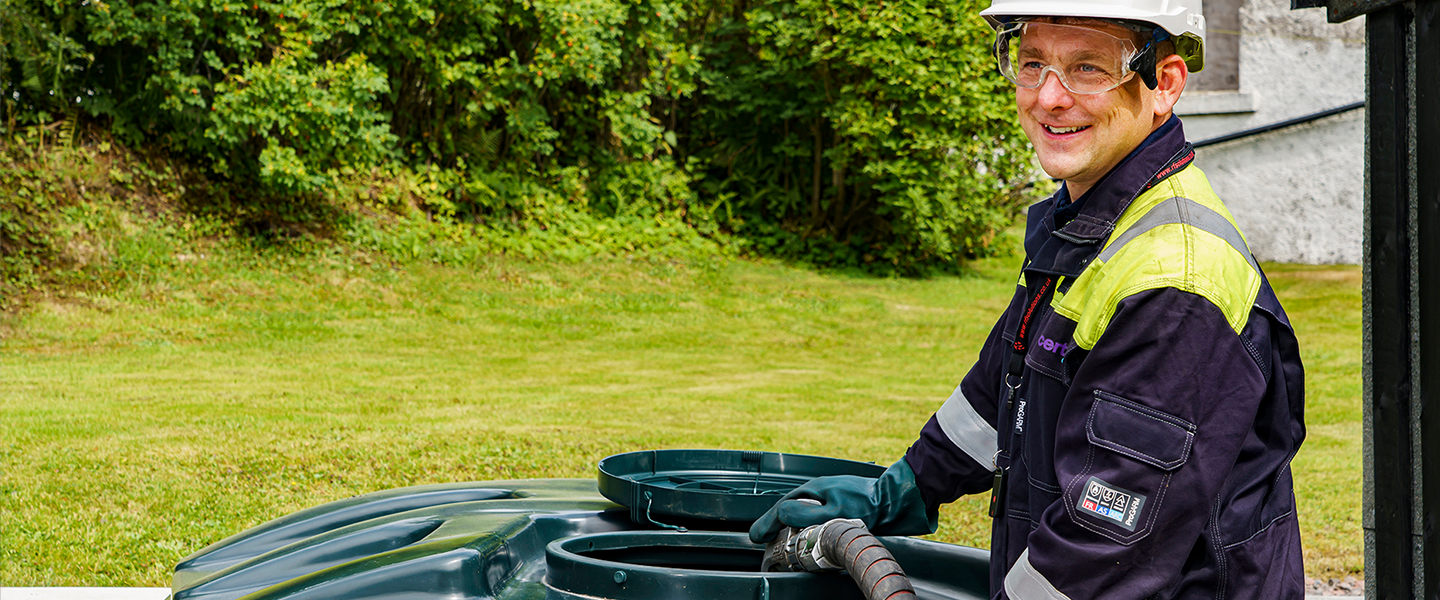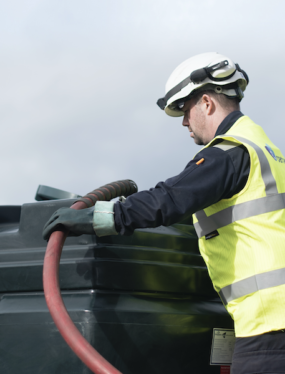Wherever you are in Scotland, the Scottish Fuels team is here to top up heating oil tanks – even if you’re off-grid. We also know how important it is to take care of your heating oil tank. That’s why every time we come to top up your fuel, we give your oil tank a visual tank inspection first.
And for those times when you might need a spare part for your tank, or even a new tank replacement, our team of expert OFTEC-registered tank installers are on hand to help. We also have a dedicated tank helpline for if you have any questions, help or guidance along the way.
If you’re new to heating oil tanks or considering getting a new tank installed, here’s a guide on some of the things you’ll need to know about heating oil tank installation.
Understand different types of fuel tanks
Today’s oil storage tanks are made of plastic or steel, and come in all shapes and sizes. They generally range from about 1,000 to 2,700 litres, with the average home using about 1,000 litres a year. You have two options when it comes to tanks:
- Single-skinned tanks: These tanks have no bund or catchment area, which means they cannot contain fuel in the event of a spillage. So while they are cheaper, they are subject to stricter regulations.
- Integrally-bunded tanks: These tanks have an inner tank, and an outer tank, known as a bund. This helps to contain leaks and provides added protection.
Your tank should be fitted with a gauge to check oil levels. You should never fill your tank to more than 80-90% capacity. Your fuel usage will vary depending on your house size, boiler efficiency and general heating use.
If you need an easier way to keep track of your fuel usage, ask us about our handy Smart Monitors, which let you keep track of your heating oil levels and more on your mobile phone, tablet or laptop.
Find out more here >
Where to put your fuel tank
The location of your tank is absolutely essential to meet building and health and safety regulations. According to OFTEC guidelines, your tank should be:
- 1.8m from non-fire related overhanging on all buildings
- 1.8m from non-fire buildings or structures, such as garden sheds
- 1.8m away from doors or windows in fire-rated buildings, such as brick houses or garages
- 1.8m from liquid fuel flue terminals
- 760mm away from non-fire rated items such as wooden fences
- 600mm away from trellis and foliage that are not part of the property boundary.
Don’t forget, you’ll also need to consider access for your fuel delivery driver, so that they can get to your tank and fill it safely.
What to consider for safe oil tank installation
All domestic heating oil tanks need to comply with government regulations, including environmental and fire hazards. You should always get help from an OFTEC-registered engineer, who can carry out a full risk assessment. At Scottish Fuels, all of our engineers are fully OFTEC-trained.
Your tank’s base should be:
- Non-combustible (unable to catch fire easily)
- Made of concrete, paving stones or stonework
- Strong enough to support the tank and its contents
- Large enough to extend 300mm beyond all sides of the tank.
You can find more information on the gov.uk and OFTEC websites.
How can I maintain my heating oil tank?
You can prolong the life of your oil tank by keeping it well-maintained. This will reduce the risk of spills and leakages which are costly to clean up and are also harmful for the environment. You can look after your tank throughout the year by checking for:
- Rust
- Cracks or splits
- Bulging and deep scratches
- Rainwater in vents and gauges
- Faulty gauges or alarms
- A smell of oil or sudden increases in oil usage.
For more information on taking care of your heating oil tank, watch our video here.
How often should I get my tank serviced?
We suggest getting your tank serviced once a year by an OFTEC-registered engineer. However, if you notice any of the above problems, give our dedicated tank helpline a call on 0345 600 3423.
How do I remove an old tank?
Old tanks and pipework should be decommissioned by a trained engineer. Our technicians will remove your old tank and any pipework when we install your new one. If for some reason we cannot remove the pipework, then this should be capped to prevent further use.
Call us today for installations, upgrades or servicing:
And don’t forget, when your tank needs a fuel top up, simply call us on 0345 300 8844 or get a quote and order online.










